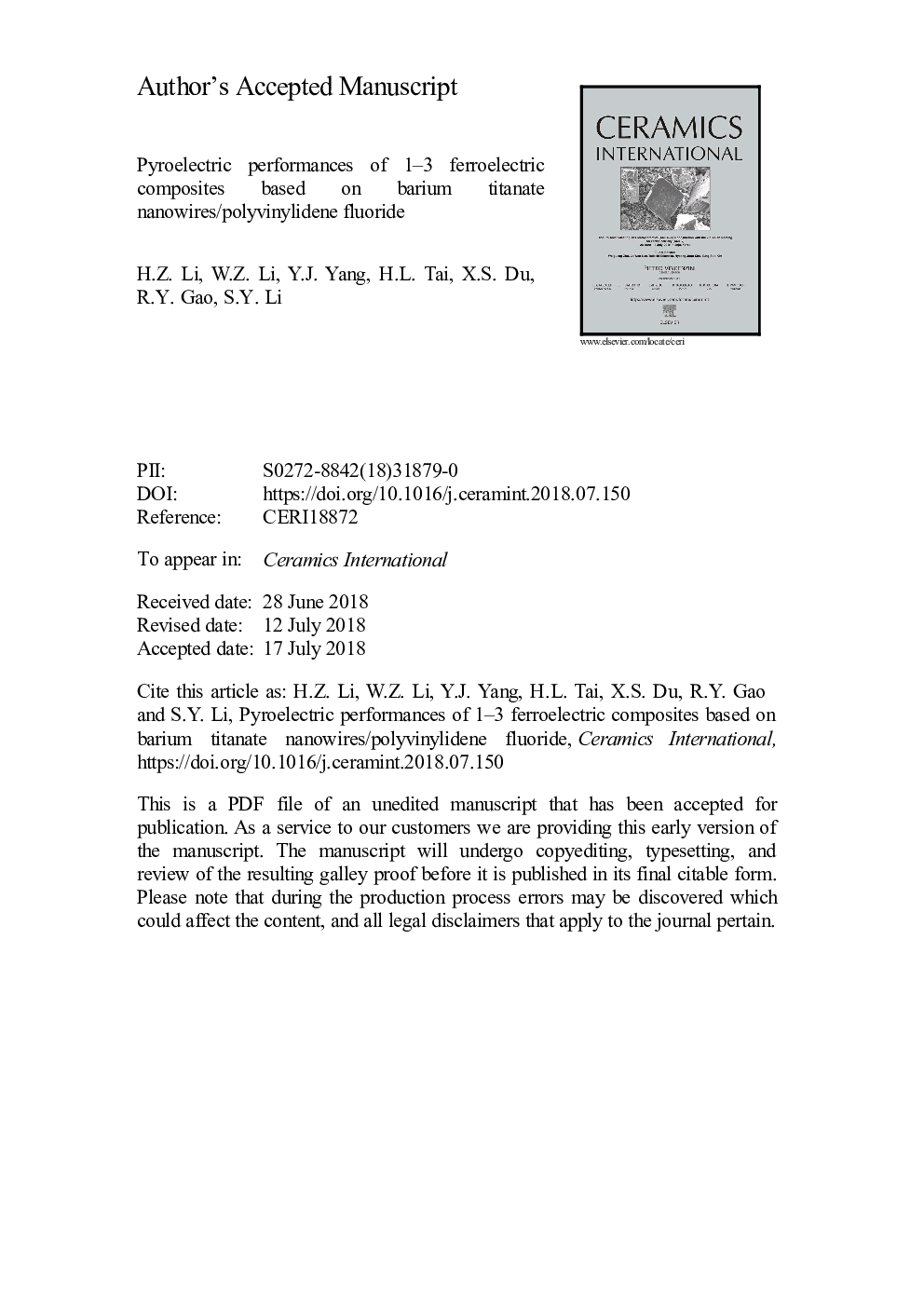| Article ID | Journal | Published Year | Pages | File Type |
|---|---|---|---|---|
| 10155383 | Ceramics International | 2018 | 26 Pages |
Abstract
Pyroelectric properties of 1-3 ceramic/polyvinylidene fluoride (PVDF) composites by using barium titanate nanowires (BTnws) and dopamine modified BTnws (DM-BTnws) as inclusions were firstly reported. 0-3 composites based on dopamine modified BT nanoparticles (DM-BTnps)/PVDF were also prepared for comparison. It was found that low contents of DM-BTnws in PVDF are beneficial for achieving high fraction of β-phase content based on the analysis results of X-ray diffraction (XRD), Fourier transform infrared (FTIR) and electric displacement-electric field (D-E) measurements. The enhancement of β-phase content in the DM-BTnws/composited film was believed to originate from strong hydrogen bonds interactions between poly-dopamine and PVDF molecules, which induced phase transition in PVDF from α-phase into β-phase. However, although DM-BTnws improved β-phase content and, accordingly, pyroelectric coefficient of the composites, they deteriorated dielectric performances of PVDF, reducing pyroelectric performances of the composites in terms of voltage and detectivity figures of merit.
Keywords
Related Topics
Physical Sciences and Engineering
Materials Science
Ceramics and Composites
Authors
H.Z. Li, W.Z. Li, Y.J. Yang, H.L. Tai, X.S. Du, R.Y. Gao, S.Y. Li,
